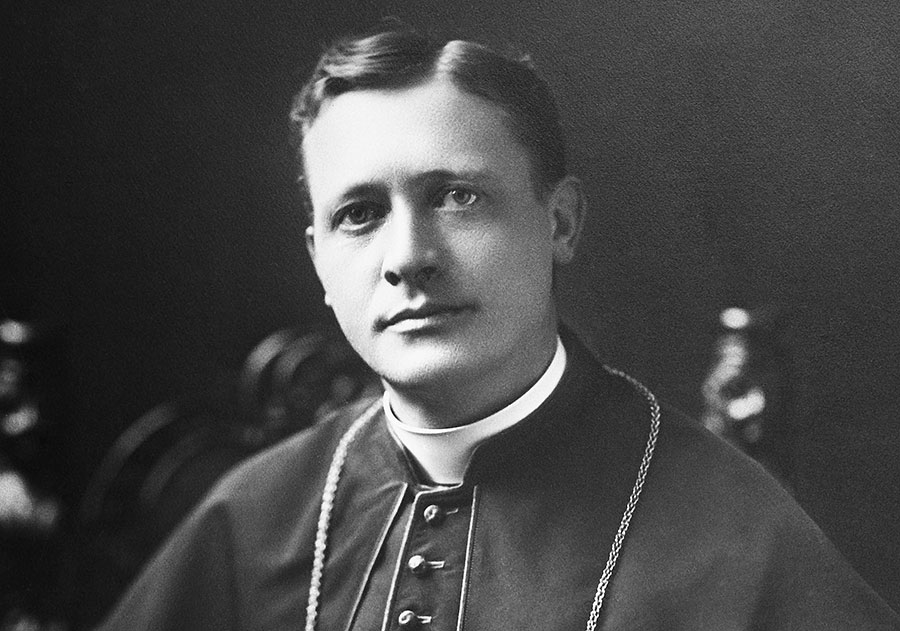I came to Montana with three leading ideas--the idea of a parochial school system, the idea of a cathedral and the idea of a college. - Bishop John Carroll
In 1883, the first bishop of Helena, John Baptist Brondel, proposed a Catholic college in Montana to help produce future priests for the soon-to-be diocese of Helena. Unfortunately, he died before his plans could be realized. Pope Pius X selected as Brondel's successor a young priest from Dubuque, Iowa: John Patrick Carroll.
Prior to his appointment, Carroll was the president of St. Joseph's College in Dubuque (now known as Loras College). He had been appointed president there just five years after joining the faculty. Upon his arrival in Montana, the newly appointed Bishop articulated three goals: to establish a Catholic school system, to build a cathedral (pictured below), and to carry forward Bishop Brondel’s vision of the first Catholic college in Montana. According to Carroll College historian Dr. Robert Swartout, “Carroll's most telling qualities were his deep and unwavering commitment to his faith, his intellectual breadth, his strong administrative talents (including his ability to stay focused on the primary task at hand), and his passion for Catholic education" (Bold Minds & Blessed Hearts, 8).
 Carroll’s fervent commitment to Catholic higher education was driven by his desire to provide opportunities for the American Catholic laity. He was convinced that with an education American Catholics could offer positive contributions to American society, especially at the higher levels of leadership.
Carroll’s fervent commitment to Catholic higher education was driven by his desire to provide opportunities for the American Catholic laity. He was convinced that with an education American Catholics could offer positive contributions to American society, especially at the higher levels of leadership.
While he referred to the college as Capitol Hill College during his speech at the laying of the cornerstone, it would later be named Mount St. Charles College in honor of St. Charles Borromeo, Carroll College’s patron saint. It was named in his honor because at the Council of Trent he was the first Church leader to propose the idea of founding diocesan colleges.

